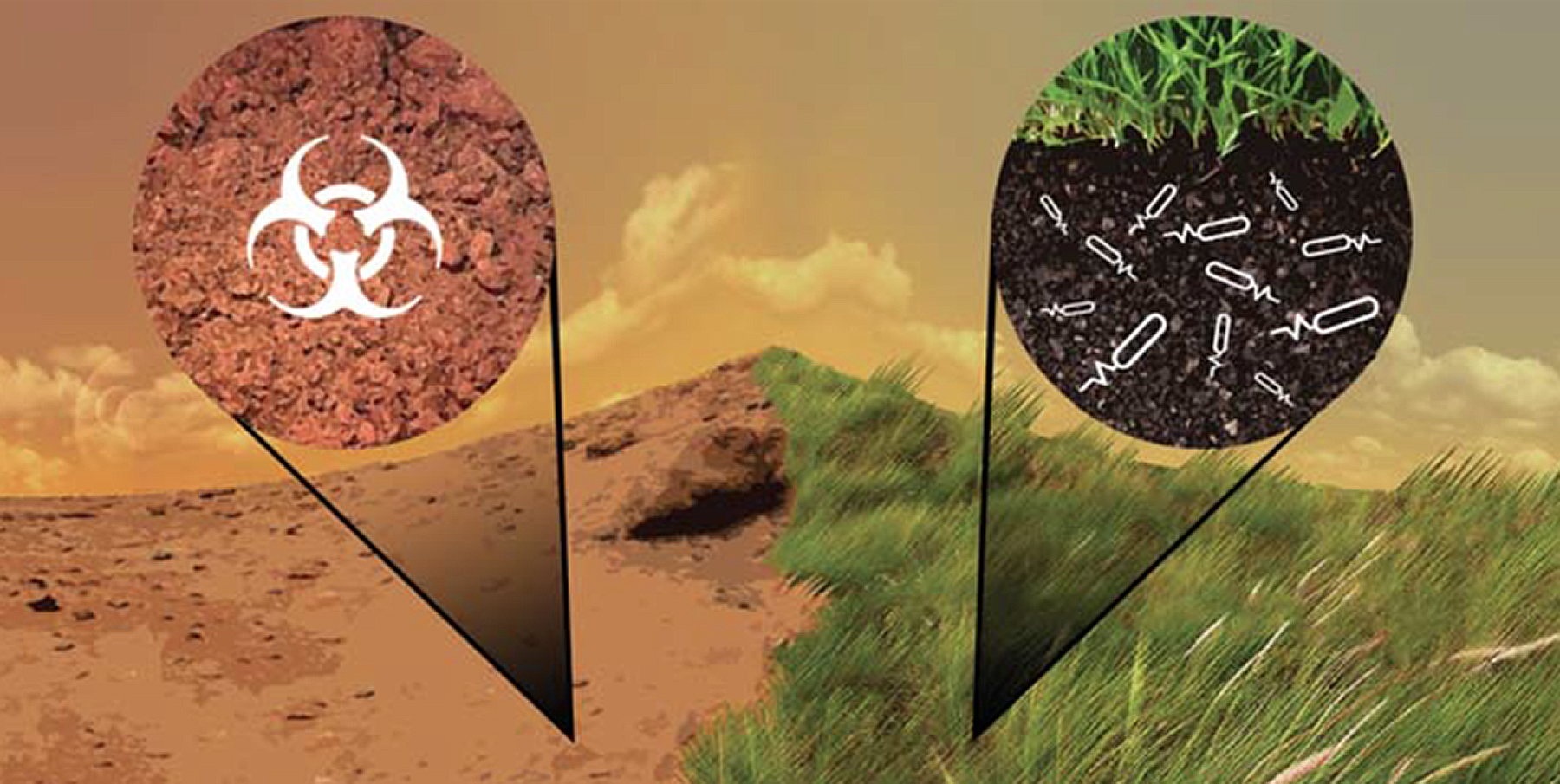Adam Arkin
University of California, Berkeley
Description
Although the theoretical case for space biological engineering is convincing, since recent studies on the use of biology in space showed substantial payload minimization over abiotic approaches even before any engineering, the functioning of these biological technologies has yet to be proven in a space-like environment. We will study such functioning for a synthetic biology architecture that can detoxify the perchlorate in Mars soil and also enrich it with ammonia. Our work will inform a prime deliverable of a comparative assessment with alternate chemical approaches postulated or scoped by NASA, and will clarify the feasibility of utilizing our proposed biotechnology to support manned Mars missions. The two system processes of perchlorate reduction and nitrogen fixation individually exist in biology and, when combined, will potentiate soil-based agriculture (by plants or microbes) on Mars. Our concept architecture is a single model organism that will eventually have both systems that are now separate in different strains of the same species. The advantages of our proposed architecture over current approaches, such as washing out perchlorate to cleanse soil or using hydroponics to grow plants, include a low initialization mass of microbial cells, on- demand cell growth with in situ resources, and the elimination of toxic wastewater. To accomplish our proposed concept architecture, we will investigate two strains of a diverse clade of organisms, Pseudomonas, which includes relevant extremophiles. Pseudomonas stutzeri PDA is a perchlorate reducer that we have previously studied using a method that examines the fitness profiles of organism mutants in several environment conditions to obtain genetic determinants of fitness. Pseudomonas stutzeri is also capable of nitrogen fixation (e.g. strain A1501). Pseudomonas has two advantages that make experiments with it more practical than with other space synthetic biology possibilities like photosynthetic, extremophile cyanobacteria: the use of the same host cloning vectors as the model laboratory organistm Escherichia coli, and a doubling time of an hour, which is much faster than seven hours for a model non-extremophile cyanobacterium and four days for a model extremophile cyanobacterium. We will test an environmentally-relevant Pseudomonas host that, in follow-on work, we expect to refactor for efficient expression, operation, and interfacing to different hosts including Pseudomonad extremophiles, cyanobacteria, and other mission possibilities. Here, we will map perchlorate reduction and nitrogen fixation performance to host physiology and environment variables. Since we have already developed a microbial growth chamber that can apply environment parameters over Mars-relevant ranges, e.g., pressure from 10 kPa, temperature from -60 degrees C to 40 degrees C, light intensities up to 25 klx, UV radiation, and a 95%-3% carbon dioxide-nitrogen atmosphere, we will study how strains PDA and A1501 perform in increasingly Mars-like conditions, and what genetic mechanisms mediate survival, growth and activities in these conditions. By controllably exploring functionality, we will map the most extreme conditions in which our mesophile can survive, grow and perform. We will then identify limitations on these activities, and derive targets for future individual and joint optimization of system operation in parameter ranges that are more like Mars. Our work will enable a techno-economic analysis of performance versus output-generation time, input/nutrient mass needs, necessity of alternate chemical approaches, etc. Our concept will achieve the “promising potential” of biological technologies, identified in the 2015 NASA Technology Roadmap TA 7 as “deserv[ing] sine attention.” Broader impacts include Earth-based bioremediation (e.g., land cleanup near oil wells and toxic spills) and non-arable land enrichment to improve food production to address famines, drought, larger populations, etc.
































